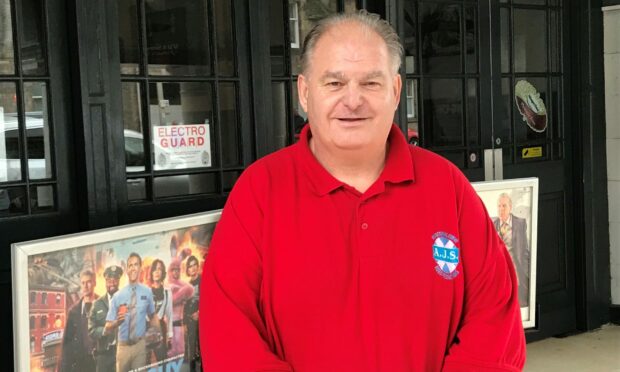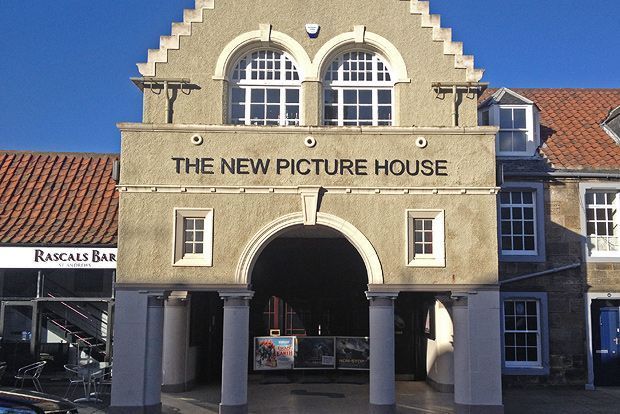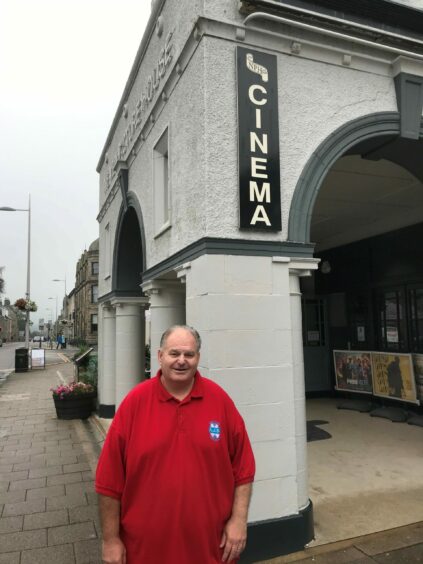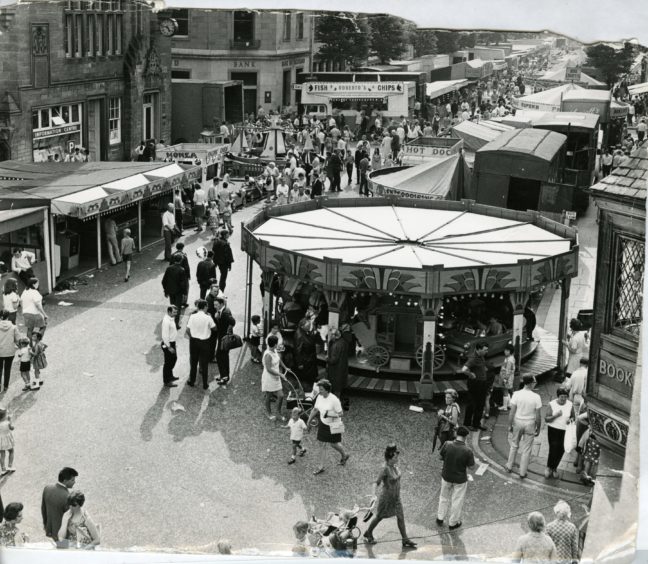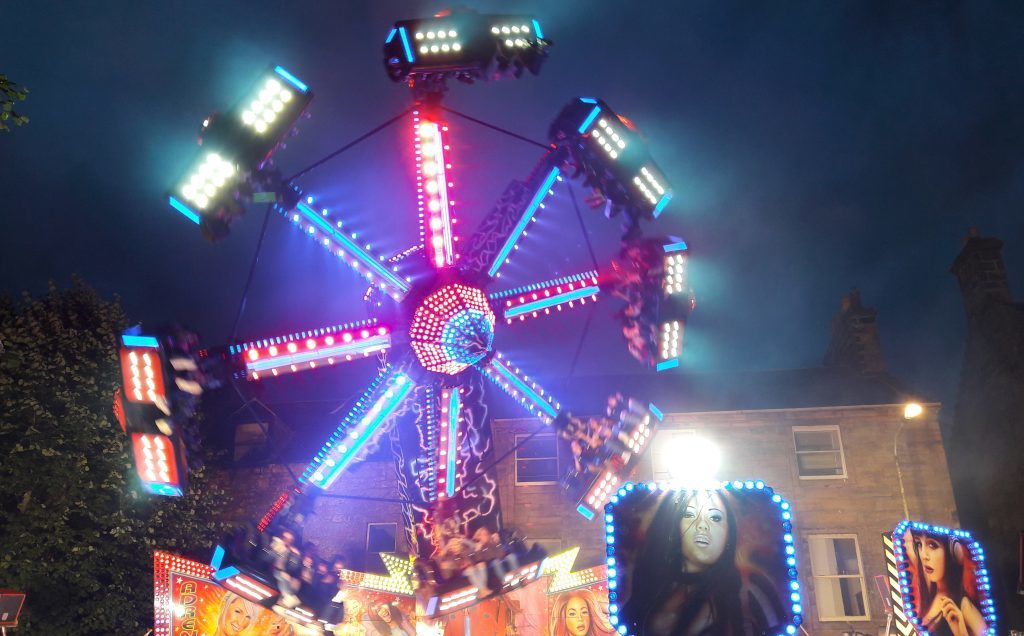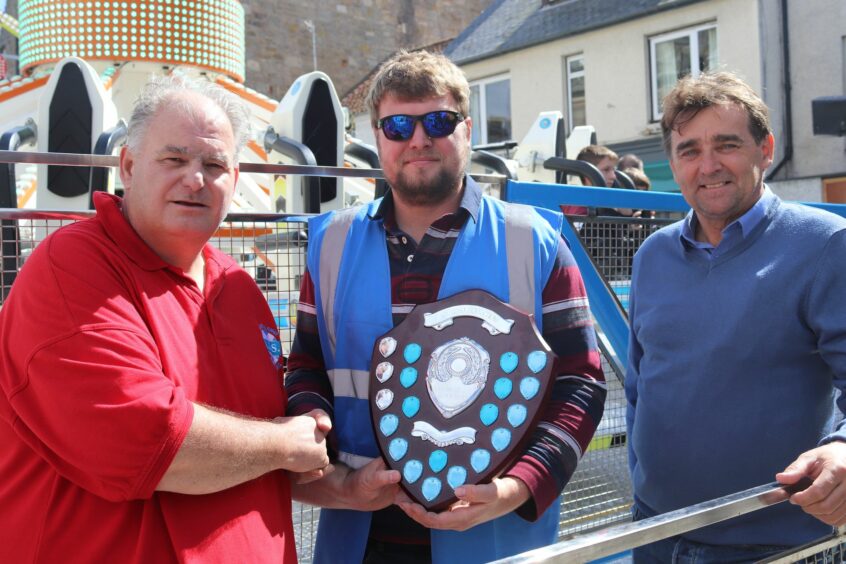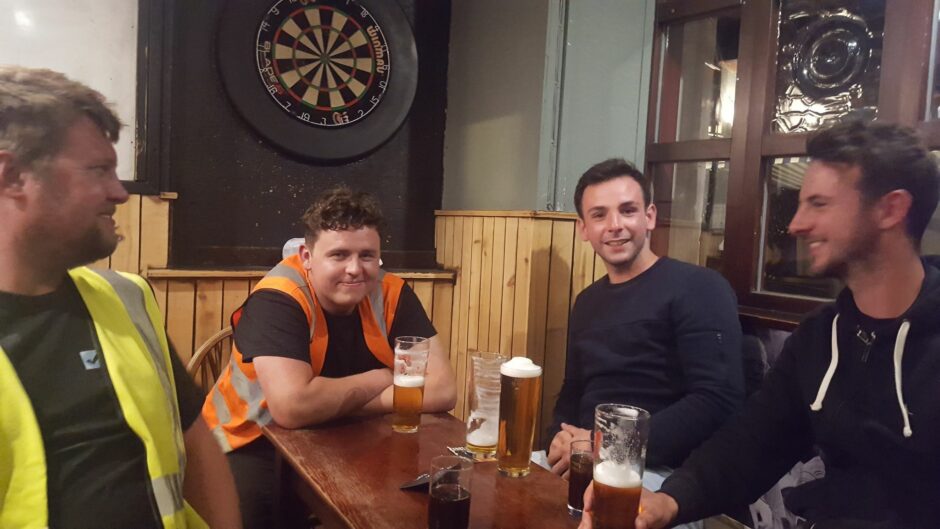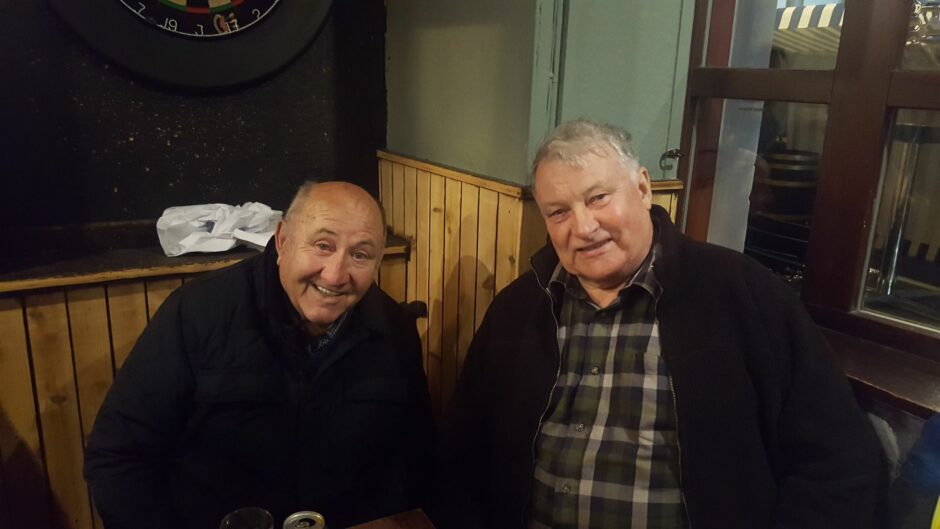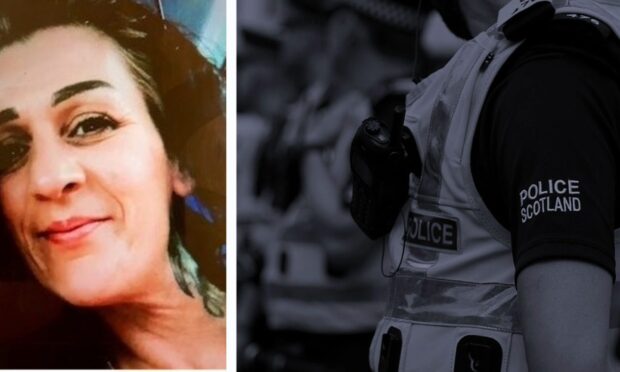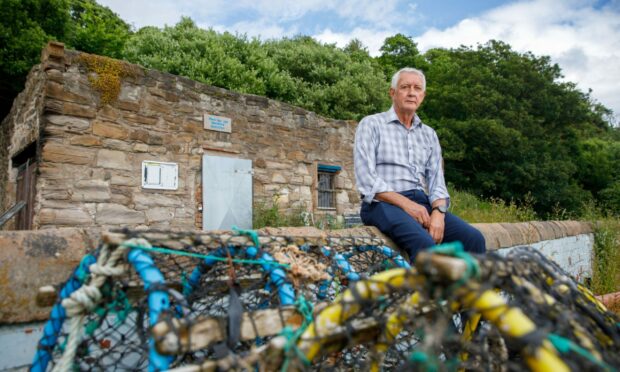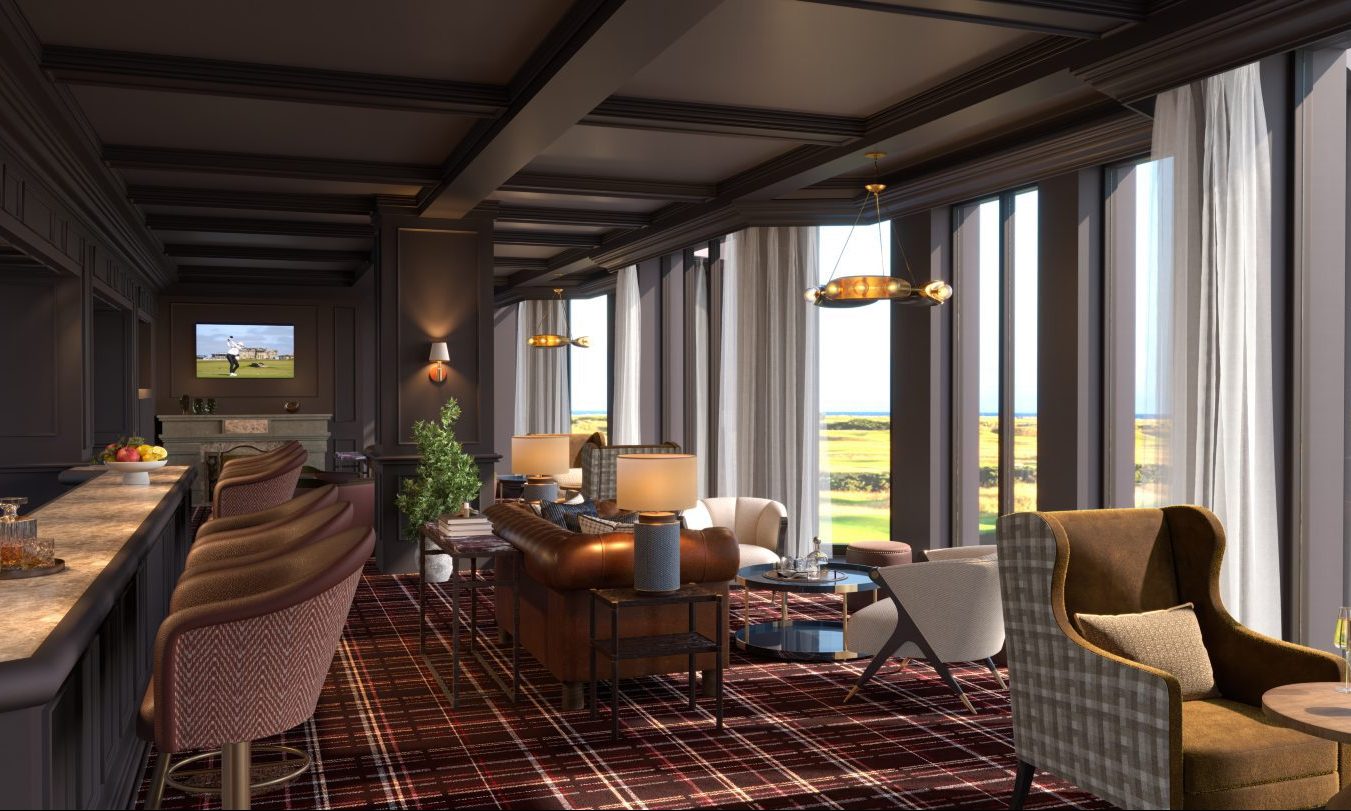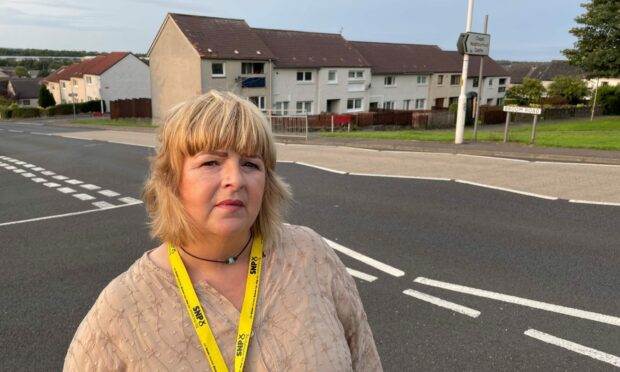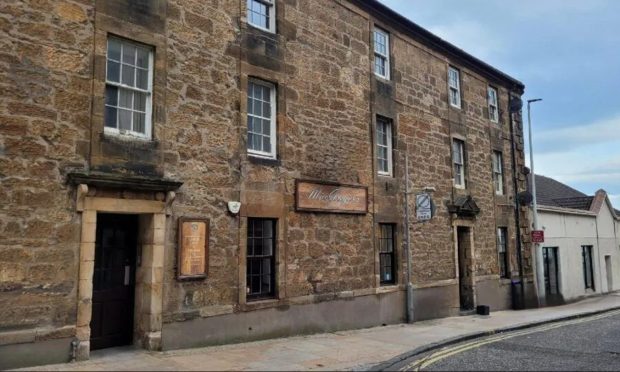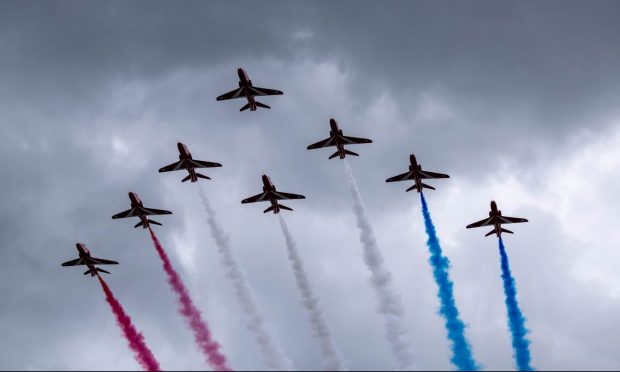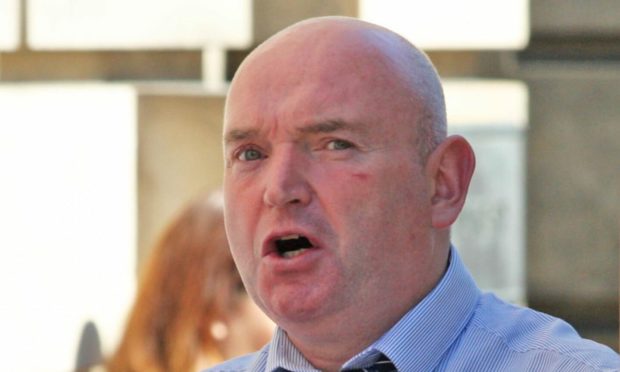Michael Alexander speaks to former cinema projectionist and lifelong fairground enthusiast Alan Sturrock about his love for the Lammas Market in St Andrews which he has now filmed for 30 years.
When born and bred St Andrews man Alan Sturrock left Madras College aged 15 in 1978 and got a job working part-time at the town’s New Picture House, he discovered that cinema projection work was an art.
In those pre-digital days, projectionists had to master the technical skills of striking up the carbons to get the projectors to work, lace up the projectors with highly flammable film and change the reels every 20 minutes.
Trained up by profoundly deaf chief projectionist Ian Collins, he also had to learn how to adjust the arcs, change the plates on the projector and change the lens for Cinemascope.
Add to that the synchronicity of dimming the houselights, playing the footlights, and opening the curtains, and he learned the job, when done well, involved real showmanship.
However, what also sticks with Alan when he thinks back to the five years he spent working at the NPH, was the realisation that every time he watched a film, he increasingly wanted to know how the films were made.
Interest in filmmaking
In those pre-internet days, he relied on editions of cinema industry magazine Screen International to learn about filmmaking.
Then one night he decided: “I want to do that – I want to produce something for people to watch”.
Admitting he was “hardly the brightest bulb in the pack” at school, and with the words of one teacher seared in his mind that he would “never amount to anything”, Alan left the NPH in 1983 to work in the mail room at St Andrews University before moving on to the physics department.
The former Langlands Primary pupil and lemonade factory worker eventually set up his own taxi company in St Andrews, which he ran for a decade.
However, Alan’s interest in film making never left him.
Perhaps it was in his blood. While working at the cinema, he discovered that his grandfather Jimmy Sturrock had been projectionist then manager there in the 1930s.
It was while doing some editing work for his wedding photography father Murray Sturrock in the late 1980s that Alan got the opportunity to get behind the camera for the first time.
Buying a then state-of-the art Super VHS video camera, Alan set up AJS Video Services and started filming weddings, parties and other social events. He got into the editing side too.
What it also did, though, was lead Alan into a world where he started filming his passion for the annual St Andrews Lammas Market.
Passion for Lammas Market
As with generations of born and bred locals, Scotland’s oldest surviving medieval street market had been part and parcel of life ever since Alan was a wee boy.
However, when Alan started filming the market in 1991 at a time when few people had video cameras at their disposal, it launched him on a journey that’s seen him recently mark the 30th anniversary of producing Lammas Market documentaries.
As well as charting the changes in the Lammas through the decades, he’s also established some great relationships with the showmen – and this year, amid the uncertainties of Covid-19, even played a small role in helping to “save” the 2021 fair.
“My first memory of the Lammas was when I was about five,” smiles Alan, 58, in an interview with The Courier.
“I remember my mum and dad saying ‘we’re going down to granny’s in Lamond Drive for our tea.’
“In those days, all the market lorries would park in Lamond Drive and down Langlands Road.
“The showmen knew the residents. Power units used to get plugged into folks houses. My gran would make soup for them.
“I think in those days things like that had a meaning. There was a real community. The locals wanted to help everybody.
“But of course the highlight was going up the town to the market itself.
“I’d badger my granny and my cousins to take me up every day.
“The smell of the diesel when they arrived, the smell of their brakes. The smell of candy floss, burgers, chips. It just got to me. Following the market became my hobby.”
Changes in technology
Thinking back to his childhood, the stand-out for Alan was the ‘Jungle Ride’ on Market Street.
However, he also started to take an interest in the paintwork and names on the showmen’s lorries, which, a bit like cinema projection work, were always presented with pride.
In fact, he discovered that showmen would even wash their trucks and paint their wheels before rolling into the Links Market at Kirkcaldy and Lammas Market in St Andrews.
“When I decided to start filming the Lammas in 1991, I had moved up to the full size Panasonic MS1 camera – my first big camera,” he says.
“I was just doing it off my own back, as a hobby. I was in my late 20s. I wanted to track what was here at that time. I wanted to see what it was going to be like in the future.
“I’m interested in the history of St Andrews because I’m born and bred here, but when you see St Andrews on TV, 99% is about golf and the university. Nobody talks about the history – the cathedral, the castle, or the Lammas.”
Catching attention
With his then large TV-style camera, Alan used to catch the attention of showmen who wanted to know why he was filming.
Although some were “understandably distant” at first, when he explained he was a fairground enthusiast, they would say it was no problem for him to film – so long as they got a copy!
Over time he got to know some of the showmen with some even asking him to film them specifically.
Filming the whole arrival, set up, running and pull down of the market from 1994, Alan got to know the likes of ‘Big’ Joe White, Charlie Horne and the Codonas – legendary names synonymous with the showmen’s guild.
In 1998, he expanded his filming to cover the Links Market in Kirkcaldy. Fife Council gave permission on condition that he “gave them three or four free copies of the DVD”.
Since then, he’s also travelled to places like Newcastle and now sells his DVDs at fairground model shows across the UK. He also runs a popular Fairground Trucking Facebook page and Youtube channel. He went full HD in 2010.
As well as recording the history of the Lammas for posterity, his videos have also recorded the changes in funfair technology.
Whereas everything used to “come out of back of a lorry”, most of the big rides today are on trailers that swing out on hydraulics with the press of a button. Paintwork on rides is often replaced by LED lighting. The trucks too have all changed.
Challenges of 2021
At this year’s Lammas, Alan ended up with about 10 hours of footage which, at the time of this interview, he’s still in the process of editing down ahead of a DVD release.
However, after Covid-19 forced the cancellation of the 2020 fair and with uncertainty until the last minute as to whether the 2021 fair would go ahead, Alan is delighted to have played a “small role” in helping make it happen.
“Before the Covid restrictions were relaxed, and with a few ongoing uncertainties, the guy that organises the Lammas, Billy Hammond, was finding it hard to get the Lammas to go ahead,” says Alan.
“Billy came to me and said ‘is there anything I can do to help move this on? We’re at a stalemate how this is going to happen’.”
Alan explained that he put up a poll on Facebook which got the message across that St Andrews had an appetite for the Lammas to be there if possible. In the end the Yes votes were 1472 and the No votes 70.
With support also coming from his wife Valerie, friend David Scott Raynor and David’s wife Marta Droszkowska Raynor, who is bar manager at the Keys Bar in Market Street, the public appetite for the Lammas to go ahead was presented to Fife Council, along with a copy of the original charter.
Afterwards, the showmen voiced their appreciation in a card to Marta which said that without these efforts there would have been no 2021 Lammas.
Alan, who also got American caddie turned sand artist Robert Ogle III to create a ‘welcome’ carousel for the showmen on the West Sands, acknowledges “you either love or hate” the Lammas.
He’s aware that a minority of town centre residents and businesses over the years complain about it.
However, he believes it’s a tradition that St Andrews should be able to keep, with public support for it still overwhelming.
“The showmen love coming to St Andrews,” he says.
“The problem is people who hate the Lammas don’t understand the economics of what it brings into the town. It brings a lot of money into the Common Good Fund.
“Yes there are winners and losers. But I think St Andrews people realise it’s a tradition that shouldn’t be mucked about with.”
